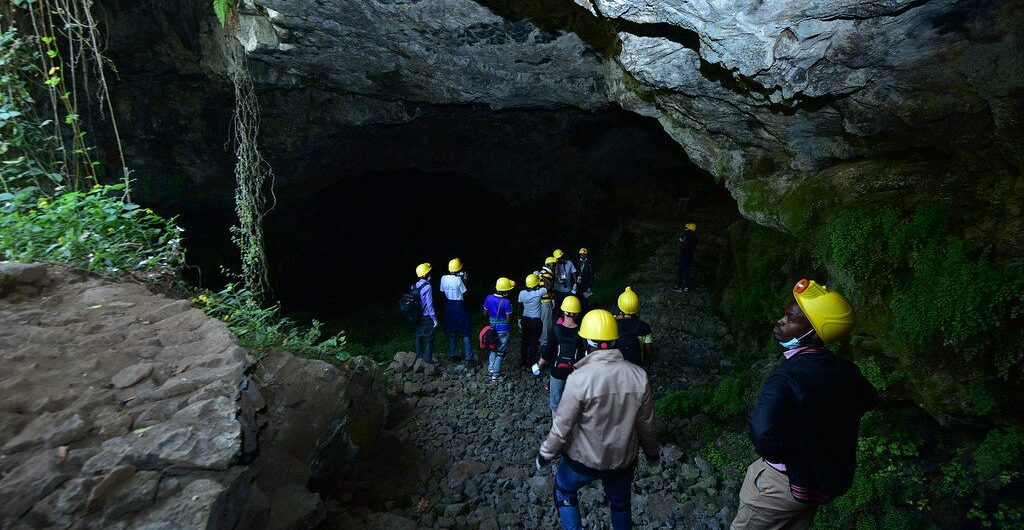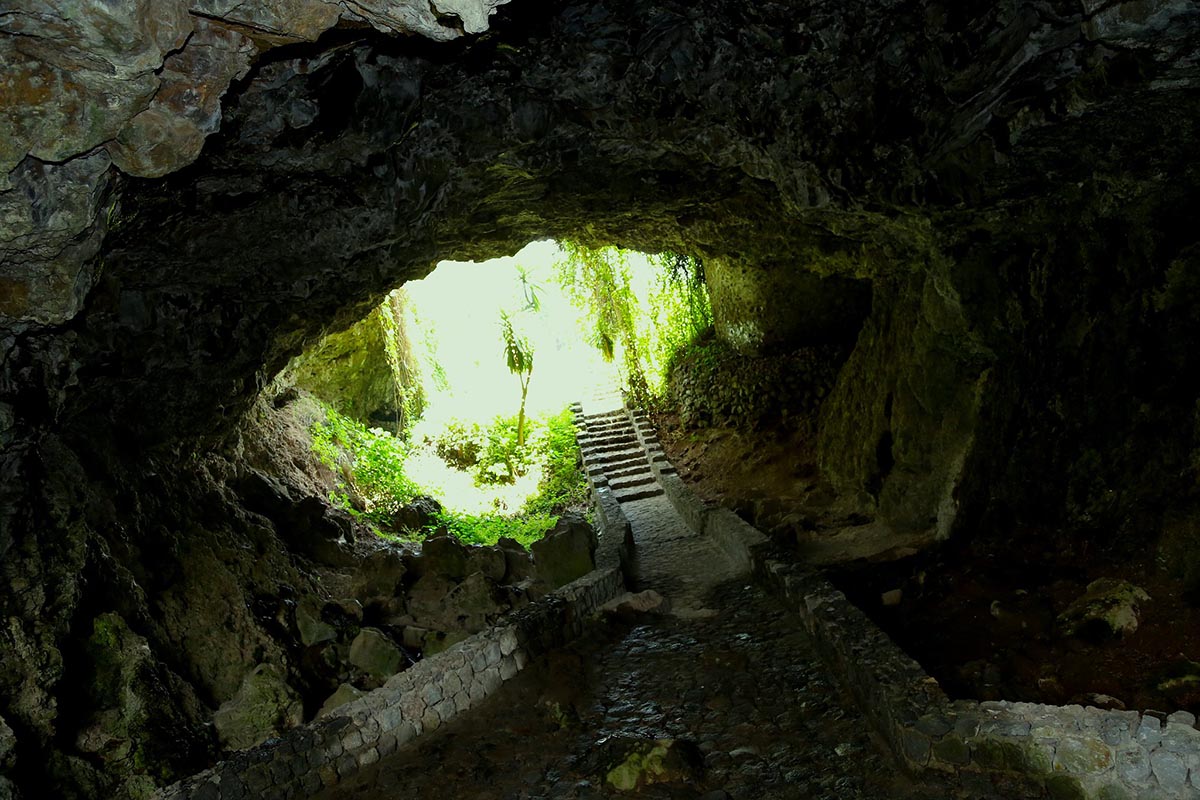Musanze Caves of Rwanda
Nestled in Rwanda’s picturesque Northern Province, the Musanze Caves offer a remarkable journey into Rwanda’s natural beauty and rich geological history. Carved by volcanic activity millions of years ago, the caves have become a celebrated attraction in Rwanda, drawing visitors with their intriguing structure, unique ecosystem, and fascinating historical significance.
Location and Access
Musanze Caves are located near the town of Musanze, which is a significant gateway to Volcanoes National Park. The town of Musanze is approximately 90 kilometers from Rwanda’s capital, Kigali, which makes the caves relatively easy to reach via a two-hour scenic drive. The roads leading to Musanze are well-paved, and the drive itself offers panoramic views of the verdant Rwandan countryside. Visitors traveling by public transportation or rental vehicles will find convenient signage along the way, guiding them directly to the caves.
Musanze town has a range of accommodation options, from budget-friendly guesthouses to high-end lodges, catering to visitors who may wish to explore the caves and nearby attractions like Volcanoes National Park.
Historical Background
The Musanze Caves hold historical and cultural significance in Rwanda. Formed as part of the extensive lava flow from the nearby Virunga volcanoes, these caves are part of an ancient volcanic ecosystem that has shaped the region’s unique terrain. For centuries, the caves were used as a shelter during conflicts. Local Rwandans would hide in the caves to escape invaders or natural disasters. The caves also provided sanctuary to various wildlife, adding to their significance as a natural habitat.
In the colonial period, the caves were sometimes used as hideouts and meeting places. Today, they are preserved as part of Rwanda’s cultural heritage and are managed by the Rwanda Development Board (RDB), which has made significant efforts to maintain and promote the site as a key tourist attraction.
Geological Formation and Structure
The Musanze Caves are a part of the extensive volcanic landscape created by the Virunga Massif, a chain of volcanoes that runs through Rwanda, Uganda, and the Democratic Republic of Congo. These caves are thought to be over 65 million years old and were formed due to lava flows from these volcanoes.
The caves stretch over 2 kilometers underground and feature several chambers of varying sizes, connected by winding passages. The main cave system has an impressive entrance that is approximately 10 meters wide and leads to a labyrinthine network of dark, naturally-formed tunnels and rooms. The caves’ walls are lined with volcanic rock, with stalactites and stalagmites adding to the mystical atmosphere inside. Visitors can expect to see various rock formations and some unique geological patterns that are typical of volcanic caves.
One of the striking features of the Musanze Caves is the presence of skylights—openings in the cave’s roof that allow sunlight to stream in, creating an interplay of light and shadow that enhances the cave’s surreal ambiance. These skylights are believed to have been created by the collapse of sections of the cave roof over time due to the natural erosion processes.
Biodiversity and Ecosystem
The Musanze Caves host a unique ecosystem that thrives within its dark, humid environment. Bat colonies are among the most prominent inhabitants, with thousands of bats roosting in various chambers throughout the caves. The bat population is primarily composed of insectivorous species, and the caves are carefully monitored to protect these bats and their habitat. Their presence contributes to the delicate ecological balance within the caves, making the site a vital microhabitat for studying underground ecosystems.
Beyond bats, there is also a diversity of fungi and algae species, which have adapted to the low-light and moist conditions within the cave. The presence of plant and fungal species that can thrive in low-light environments showcases the adaptability of life even in challenging conditions.
Tourism and Visitor Experience
The Musanze Caves were officially opened to tourists in 2013 as part of Rwanda’s strategy to diversify its tourism offerings beyond its well-known gorilla trekking experiences. The Rwanda Development Board manages the site and has implemented various safety measures to ensure that visitors have a safe and informative experience.
Visitors to the caves are typically given helmets, flashlights, and a guide who provides insights into the history, geology, and biodiversity of the caves. Guided tours are an essential part of the experience, as they help visitors navigate the intricate network of tunnels and understand the significance of various features within the cave.
The cave tour is suitable for all ages and fitness levels, although some sections may require bending or walking over uneven surfaces. The experience of exploring the caves is often described as thrilling yet meditative, as the cool, dark environment and the quiet ambiance provide a peaceful escape from the bustling world outside.
Safety and Conservation Efforts
To ensure visitor safety and preserve the integrity of the Musanze Caves, certain areas are off-limits. The Rwanda Development Board has also implemented strict regulations on littering, noise, and other activities that might disrupt the cave’s ecosystem. The board works closely with conservationists to monitor the bat population and other life forms within the cave, ensuring that human presence does not harm these delicate ecosystems.
Safety measures include installing railings in areas where footing may be slippery and placing signs throughout the cave to guide tourists. Visitors are advised to wear appropriate footwear and are discouraged from touching the rock formations to prevent erosion and preserve the caves’ natural state.
Cultural and Educational Significance
The Musanze Caves serve as an important educational resource, providing insight into Rwanda’s natural history and the ancient volcanic processes that shaped the land. Local schools and universities often organize field trips to the caves as part of their geography and environmental science curriculum. The caves’ historical role as a place of refuge during turbulent times also adds a layer of cultural significance.
For local communities, the caves represent a link to Rwanda’s past, reminding them of the resilience of their ancestors. The site has become a symbol of cultural pride, and local guides often share stories passed down through generations, connecting visitors with Rwanda’s oral history.
Additional Attractions Nearby
Musanze Caves are close to several other attractions in Rwanda’s Northern Province. The nearby Volcanoes National Park, one of Rwanda’s most popular tourist destinations, is famous for its gorilla trekking experiences and the chance to observe rare golden monkeys. The park is home to five of the Virunga volcanoes and offers hiking trails, birdwatching opportunities, and guided nature walks.
Lake Ruhondo and Lake Burera, located a short drive from Musanze, are known for their stunning landscapes and offer opportunities for canoeing, fishing, and scenic picnics. The twin lakes are also a fantastic spot for those interested in birdwatching, as the area is home to numerous species of birds.
Additionally, the Dian Fossey Gorilla Fund International’s Karisoke Research Center is situated nearby and offers educational programs about mountain gorilla conservation. It’s a great place for those interested in learning more about gorilla conservation efforts in the region.
Conclusion
Musanze Caves represent an incredible journey through time and nature, offering visitors a glimpse into Rwanda’s geological past and a rare chance to explore an underground world shaped by volcanic forces. With its rich biodiversity, fascinating rock formations, and historical significance, the caves are an unmissable experience for anyone traveling to Rwanda.
From ancient shelter to modern-day tourist attraction, Musanze Caves stand as a testament to Rwanda’s natural beauty and resilience. They offer visitors not only an adventure into the underground but also a chance to connect with Rwanda’s cultural heritage, making them a must-visit for anyone interested in the intersection of nature, history, and culture.



Comments